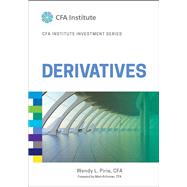Derivatives is the definitive guide to derivatives, derivative markets, and the use of options in risk management. Written by the experts at the CFA Institute, this book provides authoritative reference for students and investment professionals seeking a deeper understanding for more comprehensive portfolio management. General discussion of the types of derivatives and their characteristics gives way to detailed examination of each market and its contracts, including forwards, futures, options, and swaps, followed by a look at credit derivatives markets and their instruments. Included lecture slides help bring this book directly into the classroom, while the companion workbook (sold separately) provides problems and solutions that align with the text and allows students to test their understanding while facilitating deeper internalization of the material.
Derivatives have become essential to effective financial risk management, and create synthetic exposure to asset classes. This book builds a conceptual framework for understanding derivative fundamentals, with systematic coverage and detailed explanations.
- Understand the different types of derivatives and their characteristics
- Delve into the various markets and their associated contracts
- Examine the use of derivatives in portfolio management
- Learn why derivatives are increasingly fundamental to risk management
The CFA Institute is the world's premier association for investment professionals, and the governing body for the CFA, CIPM, and Investment Foundations Programs. Those seeking a deeper understanding of the markets, mechanisms, and use of derivatives will value the level of expertise CFA lends to the discussion, providing a clear, comprehensive resource for students and professionals alike. Whether used alone or in conjunction with the companion workbook, Derivatives offers a complete course in derivatives and their markets.








